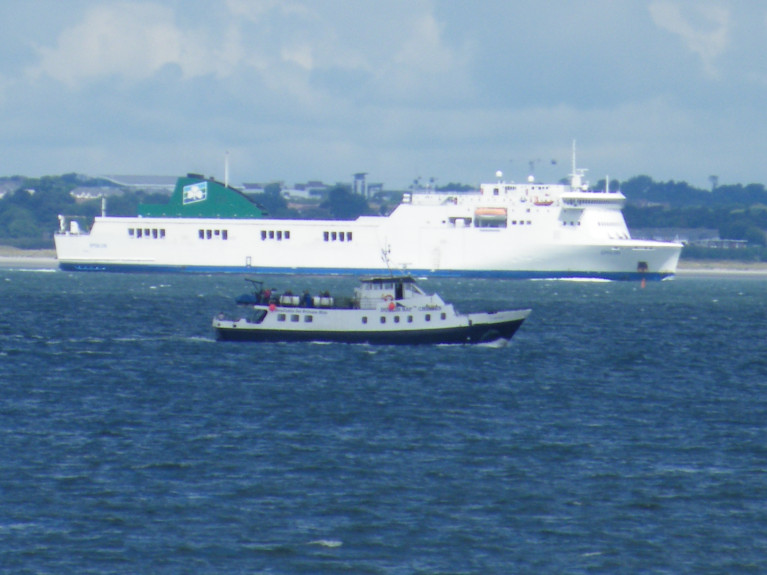Displaying items by tag: Dublin Cruises
Shipping Snippets from a Dublin Bay Perspective As Seasons Change to Reflect Times
Cruiseferry W.B. Yeats made its final layover today, which occurs every Monday in between operating two round trips weekly during the summer/high season months on Irish Ferries Dublin-Cherbourg route, writes Jehan Ashmore.
The year round Ireland-France service will be taken over by the considerably smaller ropax Epsilon which remains on charter to parent company Irish Continental Group. Today's 'underway' layover involved W.B. Yeats vacate Dublin Port with the cruiseferry departing Dublin Bay and offshore of Lambay Island while berths at the ferryport terminal (No.1) were occupied in servicing Holyhead, Wales.
W.B. Yeats final round trip in a season notably impacted by Covid-19, departs Dublin tomorrow to Cherbourg with a return to the Irish capital to be completed on Thursday. On the same day this is be followed by Epsilon's resumption on the Ireland-France service. The ropax returns to winter months duties connecting Normandy but based on an 'economy' class service while the cruiseferry rejoins Ulysses on the Holyhead link.
As for Stena Line operations a separate story is to follow suit.
More on the merchant shipping scene as a pair of Arklow Shipping cargoships are docked in south Wales at Swansea Dry Docks. They are the Irish flagged D class Arklow Dale (11,000dwat) and from the F series, Arklow Faith (4,950dwat). The former trader is one of a quartet of secondhand tonnage which ASL acquired in 2018.
The dry dock facility in West Glamorgan has benefitted since the closure of Dublin Dry Docks in 2016 when ASL became the final customer with another F series in the form of Arklow Fame. Also taking up some of this business but across the other side of the Celtic Sea has led to Cork Dockyard, part of the Doyle Shipping Group.
As for leisurely persuits, excursion passenger vessel, St.Bridget, operated by Dublin Bay Cruises completed its summer season albeit with much reduced capacity. Each of the former 100 capacity cruises during a shortened season were restricted to Covid-19 public health guidelines which resulted to just 40 sight-seers.
Among the excursions offered was a mid-afternoon round Dalkey Island coastal cruise which yesterday concluded the final trip into the bay for this year. Despite the setback of a shorter season imposed by Covid-19, some excursions attracted the private charter of the St. Bridget with cruises observed off Dalkey Island.
Over the years St. Bridget which was based in Dun Laoghaire Harbour has wintered in Dublin Port by laying-up in the Grand Canal Dock Basin, Ringsend.





























































